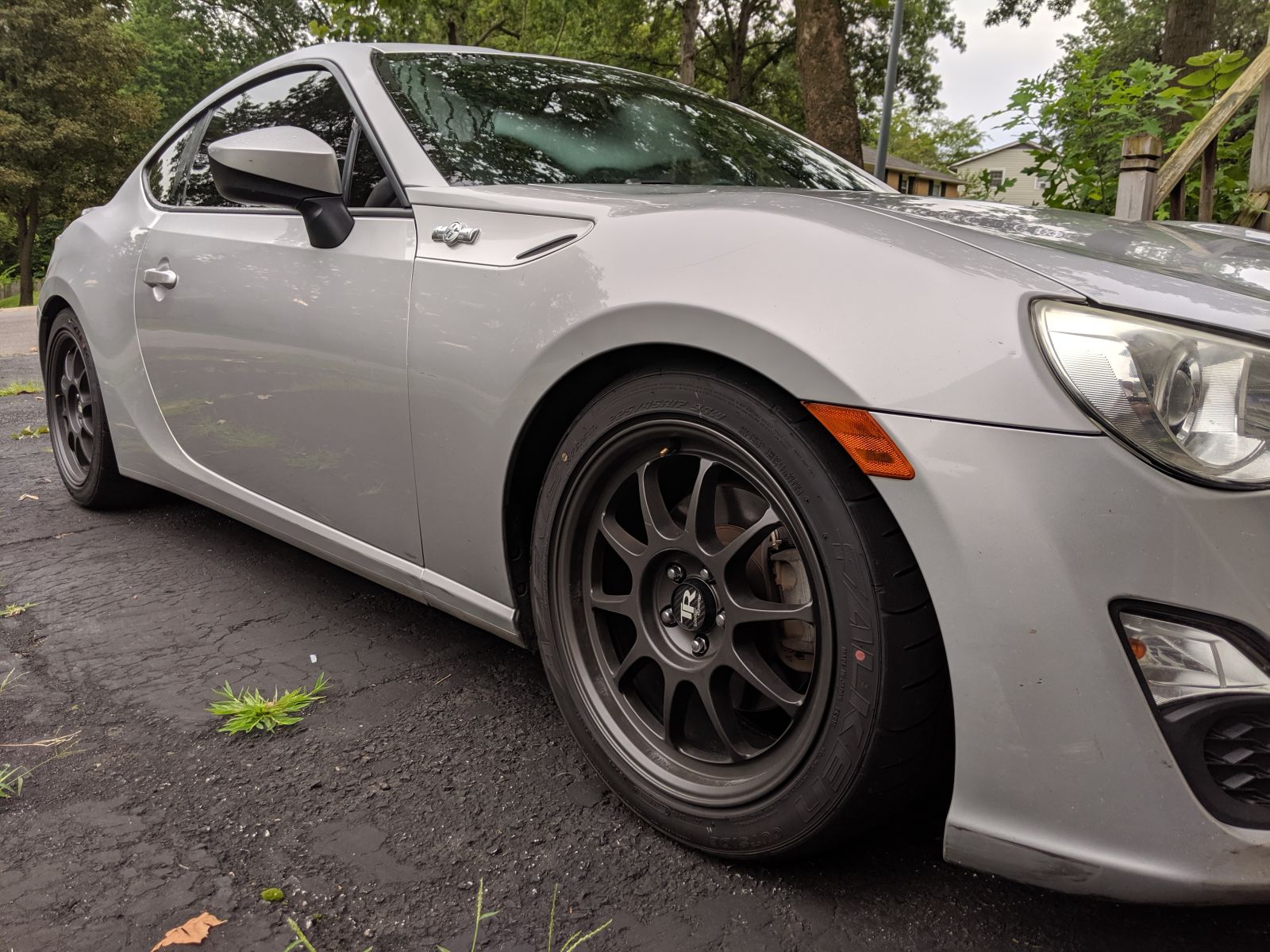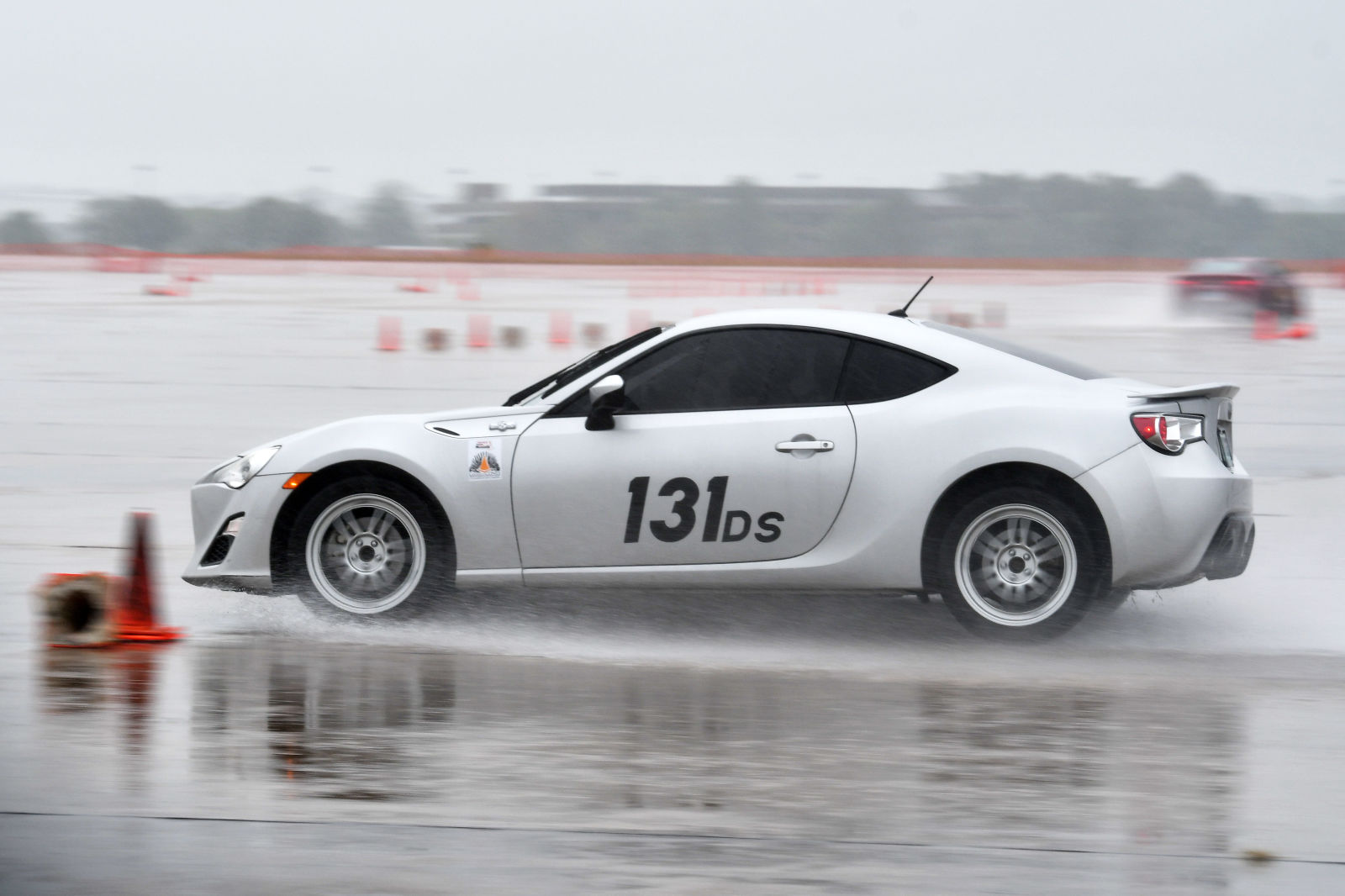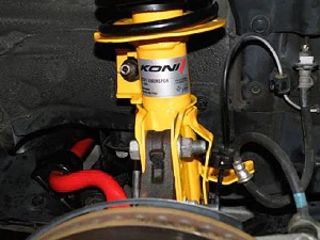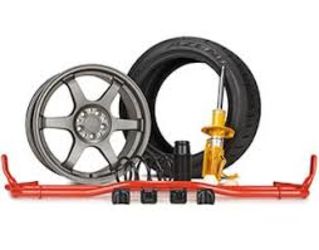
This year, the SCCA thought it was a good idea to move almost every hot turbo 4 cylinder compact into D Street (DS), where the FR-S/BRZ/GT86 resides. Last year was tough enough having to fight against WRXs, the turbo 4 cyl. Camaros, and the newly-introduced Civic Type R, but now with STIs, FoRSs, and Evos joining the fray, the twins simply don’t stand a chance. Lower weight can only go so far once the competition starts bringing AWD, 50-150 more horsepower, and/or 20-60 mm more tire.

Fortunately for Toyobaru owners, the SCCA also introduced the Solo Spec Coupe (SSC) class last year. This class is composed exclusively of 2013-2016 cars with identical suspension upgrades (springs, shocks, sway bars, alignment hardware), wheels (17" x 8" with offset limits and a minimum weight), and tires (225/45R17 Falken RT615K+). This makes it easily one of the most level playing fields among SCCA Solo classes and the entire set of parts only costs about $3k. To put that price into perspective, a super-competitive Street class build can easily run up to that amount and Street Touring, the next “level” of classes, heads north of $10k.

My husband and I are attending nationals again this year and hoping to stand a chance at taking home more trophies (awarded to the top ~25% in each class), so moving to SSC felt like the obvious choice. The $3k spend to get there wasn’t exactly a welcome one, but we could at least sell our wheels, tires, and sway bar from DS to soften the blow. Once everything was installed, we were surprised at how well-sorted the package was. The powers that be appear to have put some effort into the part selection/tuning so that performance could improve without becoming a detriment to daily usability.
The car now sits about 1" lower and has some stiffer spring rates, but the damping (with adjustable rebound) is matched well enough that only the largest of bumps are more jarring than they were on OEM suspension. We also greatly appreciated the alignment hardware because the FR-S’s original camber limitations (even with crash bolts) had us positively DESTROYING the outer edges of our tires. Now we can hit -3 degrees, which not only resolves that tire wear issue, but also allows for a lot more handling adjustments to be made. The only downside here is having to downgrade our tires from the top dogs of 200TW to Falken Azenis RT615K+. They simply aren’t as good as the RE71R or Rivals, but on the plus side, they’re said to last longer and are about $35 less expensive per tire. People in SSC and those considering it often complain about their relative drop in performance and lower effective temperature ceiling, but for an accessibility-focused class like this, it’s a very reasonable pick. If nothing else, everyone in the class has to deal with them anyway.

All of that said though, our first outing with it didn’t go very well. At a KC region event we managed to both land in the top 15 PAX out of 101, but the car didn’t feel good at all. Some of it could be attributed to the less responsive Falkens, but a much larger part of it was due to mistakes made in our initial setup. We originally had -3 camber all around, both sway bars set to soft, and both sets of shocks set near middle stiffness. This resulted in the car pushing all the way through each turn, actively fighting rotation, and a weird feeling of disconnect between the front and rear that made transitions frustratingly difficult to manage.
From what we noticed at that event, the rear tires were overusing their inside edges, and the balance of cornering grip definitely needed to move forward a bit. To fix this, we dropped the rear camber down to -2.25 per Tire Rack’s recommended settings. We also looked up sway bar rates and found out that the soft/soft settings were likely to be another culprit in our handling woes. As it turned out, the rear was only putting in about half as much work as the T H I C C boi up front (25mm and 3.5x stiffer than OEM... on the soft setting). It was simply too much of a disparity for this car, so the rear got switched to stiff, which is about 68% of the front’s rate.
A few days later, we giving it another shot up in Lincoln, NE for the final Midwest Divisional event. What makes this particular event special is that they always run a copy of the courses from last year’s nationals. Not only was the course the same as what we drove before, but we were going in with a very similar experience deficit (new surface vs. new car setup) and the weather was nearly identical on one of the days. Naturally, a comparison video is order. It isn’t scientific by any means, but it is at least interesting to watch the differences in car behavior play out side-by side.
For the course in the video above, we both went few tenths faster than we did at nationals in DS. This was more or less to be expected, whatwith DS and SSC having near-identical PAX multipliers. As for how the car drove after our adjustments, it was much, much better. We still need to play with the rebound settings a bit, but overall, it’s back to being intuitive and productively playful again. Even better, it felt easier to find that happy little amount of slip to quickly rotate around a corner than it ever did in DS. Needless to say, I’m very satisfied with it so far.
At the end of the event, we were off the lead pace by about 1.5 seconds on each of the ~65 second courses... or a bit less if I hadn’t coned away my fastest run on day 2. We didn’t feel too bad about that though, considering the newness of this setup and our competition including last year’s 2nd and 4th place finishers. We made some easily preventable mistakes that could have closed up half of that gap or more, but we’re still going to need a lot more seat time and fine-tuning work to stand a chance at eking out the rest. Unfortunately, with nationals being less than a month away and us only being able to make one more event beforehand, we won’t be anywhere near that level in time. I think the trophies are back within reach, but it’s not a sure thing, so we’ll just aim for what we did last year: Have fun, don’t finish DFL, and enjoy the chase.
